By Alex Trukan
The game of football is usually divided into three phases – attacking, defending and transition (offensive and defensive). Although this way of looking at it is very useful, it also has some limitations. Most importantly, those three phases of the game are interconnected and linked to each other. During the match, the game flows from one phase to another, without any stoppages in between. Therefore, the way the team defends, will affect their attacking options. Similarly, the attacking strategy will influence the defending tactics. It can be thus stated, that the game model is the way the team plays not only in relation to who possess the ball but also where it is and the state of the game.
One of the most popular example of that is when central midfielder drops between centre backs to provide them with not only option to pass, but also some form of defensive cover in case the ball is lost. It therefore, enables centre backs to step up forwards and get more involved offensively. Having an additional player between centre backs will help to defend the central areas and would therefore, force the counter attacking team more into wide areas.
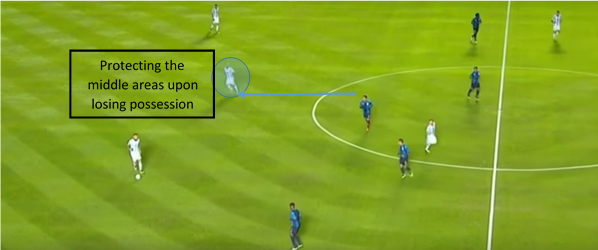
Building on this, if the team chooses to build up from the back using penetrative vertical passes into central midfielders, this would pose a major risk defensively if the ball is lost. This is especially the case if attacking central midfielders position themselves behind the opposition midfield unit, which puts them in a delayed position to recover.
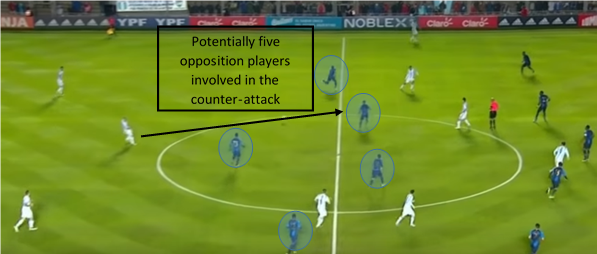
Linking to that, it is important to note that support behind the ball is not only attacking oriented, but also provides defensive cover in case the ball is lost. This is why, it is crucial to have players behind the ball on the angles, positioned from central areas.
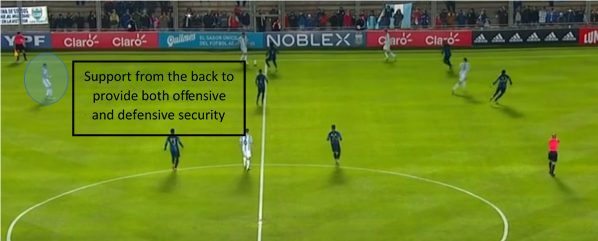 Another important defensive factor to consider when attacking are spaces. If the attacking team has possession in the opposition’s half, and the defending team is positioned deep, spaces would usually be left behind the back unit. Centre backs, might therefore choose to anticipate direct passes and drop slightly in behind. Similarly, the goalkeeper would push up to narrow the gap. This is why, the position of these players in the attacking phase will be partially dependent on the way they will have to defend in case the ball is lost.
Another important defensive factor to consider when attacking are spaces. If the attacking team has possession in the opposition’s half, and the defending team is positioned deep, spaces would usually be left behind the back unit. Centre backs, might therefore choose to anticipate direct passes and drop slightly in behind. Similarly, the goalkeeper would push up to narrow the gap. This is why, the position of these players in the attacking phase will be partially dependent on the way they will have to defend in case the ball is lost.
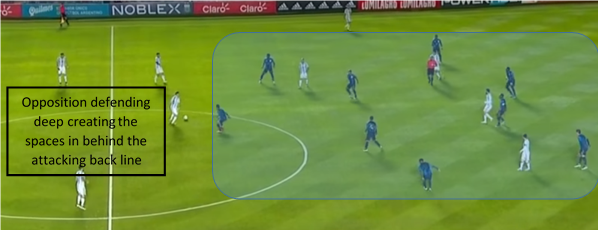
Switching play and playing horizontally (i.e. diagonal balls) also pose a threat in case the ball is lost. This is the case if the player on the opposite side is isolated, what makes that side weaker and more difficult to defend against the counter attack.
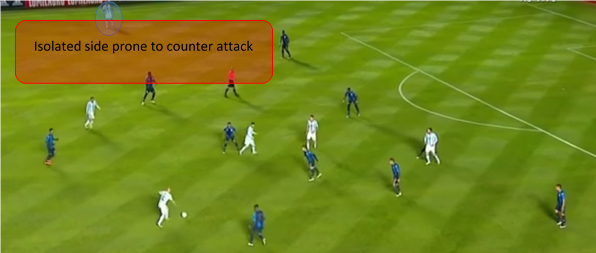
Finally, having more players on the opposition half, will encourage high press upon losing possession. It therefore, will be very difficult and inefficient to start defending deep straight away if the team attacked with a lot players positioned up front. Also having players in front of the ball (what provides an option to play forwards when attacking) is a danger if the ball is lost as those players will have to recover longer distance to get behind the ball.
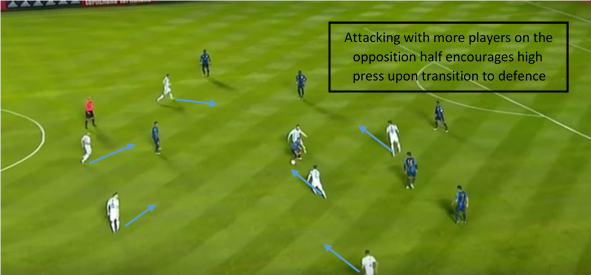
When designing a playing model of the team it is crucial to consider these links between the phases of the game. This will help to make the team more efficient and effective in all of the moments. One of the starting points are capabilities and strengths of the available players.
By Alex Trukan, Development Coach, Nottingham Forest
@AlexTrukan


